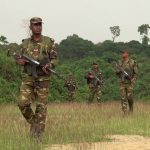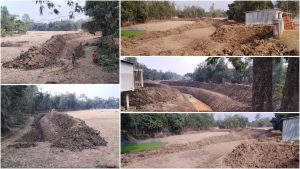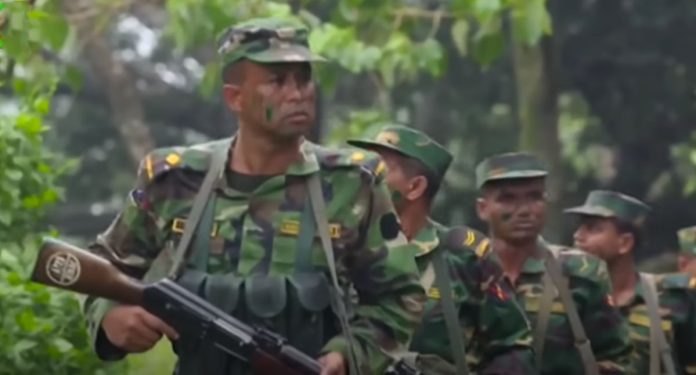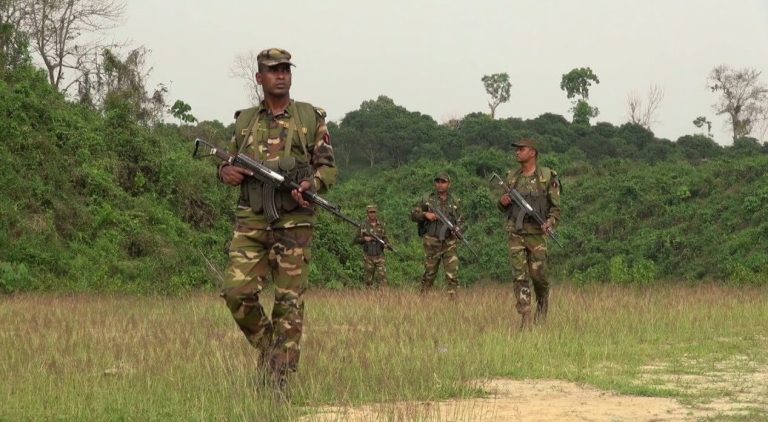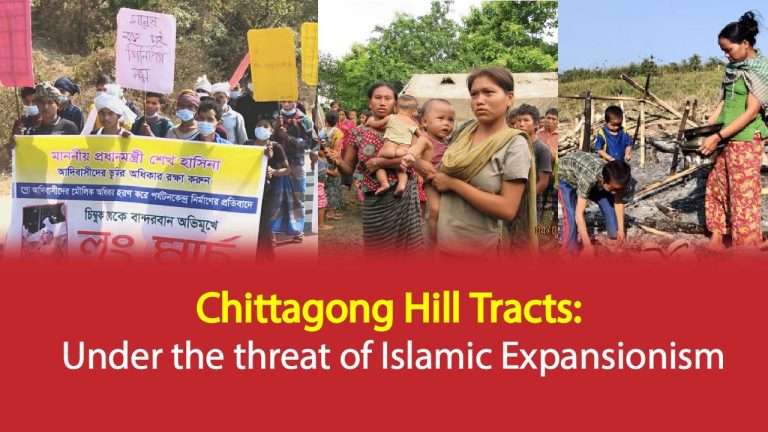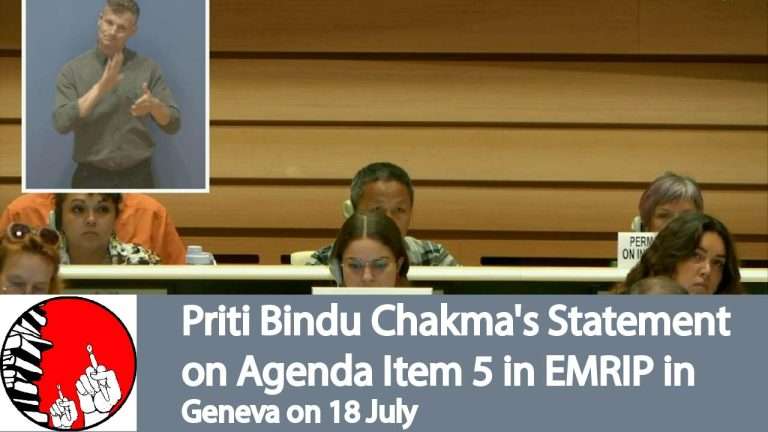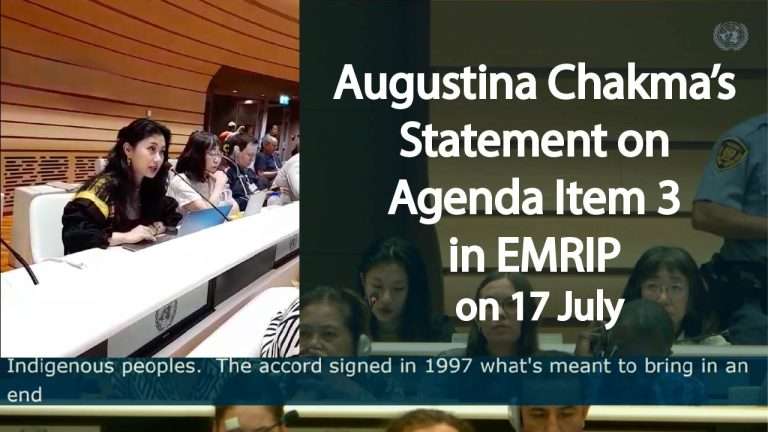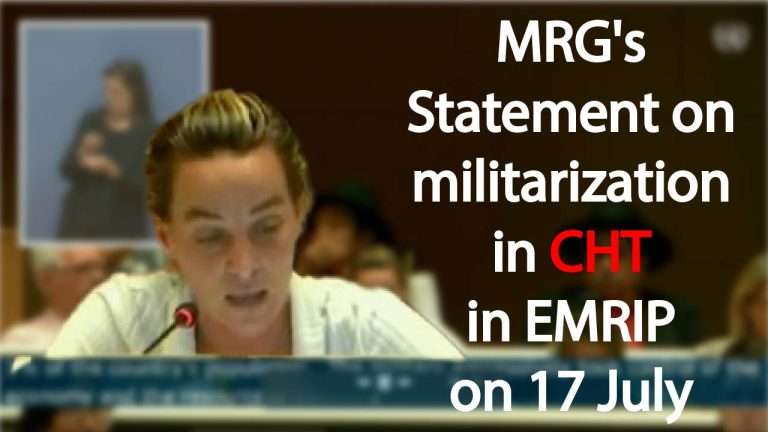Hill Voice, 11 January 2022, Patuakhali and Barguna: About 70 per cent of the last Rakhine villages, crematoriums and 50 per cent temples are affected by land grabbing in Patuakhali and Barguna. Most of these land have been occupied in the last three decades. Some crematoriums and temples have been completely occupied. A few crematoriums and temples now survive in name only. The occupiers have cordoned off the area in such a way that access to some temples and crematoriums has been blocked. “All this is happening at the patronisation of the administration,” said Rakhine leaders.
It has been observed in the investigation of six Rakhine villages in Kalapara upazila of Patuakhali that land grabbers have built shops, mosques and madrasas on the land they occupy. However, a case is pending in the court regarding the ownership of those lands. The Rakhine population has declined In Patuakhali and Barguna by about 95 percent in less than a century. This is mainly due to land grabbing.
“Our living space has shrunk so much that we can’t even carry out the funeral according to our own traditions,” said Chingma Prue, a resident of Rakhine village in Nachnapara. He explained that all Rakhine crematoriums have two parts. They call the crematorium Chansai. Although Rakhine are Buddhist in religious beliefs, Rakhine customs differ greatly from Bengali Buddhists and even from other indigenous Buddhists. According to Rakhine rites, guests are buried in one of the two parts of the crematorium. According to tradition, they are the guests who died outside their village. In another crematorium, those who died in the village were cremated. In most of the cases, the land of the guest crematorium as well as the main crematorium has been occupied by the land grabbers.
The crematorium of Nachnapara village is on 0.30 acre of land on paper but at present it is not more than 0.10 acre of land. The road leading to the crematorium has also been completely occupied by land grabbers. Installations have been made on three sides of the crematorium, including shops and madrasas. “There is a special rule for carrying the body to the crematorium, that is, the corpse or the coffin carrying the body cannot touch anything else in any way,” said Fruye Rakhine. The Arpangasia River flows along the side of the crematorium. The crematorium is also breaking across the Arpangasia river. Land grabbers have turned the crematorium into a garbage dump. You have to walk very carefully in the crematorium, because many Bengalis come here to respond to the call of nature.
Another crematorium in Nachnapara has already been occupied like many other Rakhine places. These seizures are usually through forged documents. Another process of occupation is to first occupy the surrounding khas land. Then this occupation is gradually increased. The beginning of the occupation can often be peaceful, such as renting a shop. The rented shop soon changed to its own store.
In this process, a Bengali family is starting to occupy the land of the famous Sima Buddhist temple in Mistripara of Kuakata. The family rented a shop from the temple for Tk. 50 a month two decades ago. “After years of leasing, they are now claiming it as their own land,” said Mongla Ching, president of the management committee of Mistripara Buddhist monastery. This monastery is established on 0.86 acres of land. Selim Munshi, accused of grabbing of temple land, claimed that they had bought the land and set up shop. He never rented the temple. However, he has given ‘contribution’ in the festival.
Mong Mya Rakhine, a member of the Bangladesh Indigenous Peoples Forum, said, “The land of the Rakhine are being occupied by the land grabbers with the help of the local administration.” He said that according to the State Acquisition and Tenancy Act of 1950, the land of cremation or temple is not transferable, but the land is being occupied by the land grabbers with the help of the administration claiming ownership of the land.
“Grabbing of the Rakhine’s land became a common occurrence in the 1990’s, when the tourism potential of Patuakhali and Barguna districts, including Kuakata, increased exponentially,” said Mong Mya. Mong Mya Rakhine is an official with the Caritas’ Integrated Community Development Project. Through this project, Caritas has been working on Rakhine education, land and cultural rights since 2007.
According to Caritas’ project, there are 22 crematoriums in the remaining 39 Rakhine villages of Patuakhali and Barguna. The rest of the crematorium is either completely or partially occupied. There are no crematoriums left in at least 12 villages. In the case of temples, there are temples in 20 of the last 39 Rakhine villages.
The ruins of an ancient Buddhist temple at Keranipara, the heart of the seaside town of Kuakata, are still standing. The temple has long been a major tourist attraction in the city. Even in 2017, this temple was visible from the main road. But some parts of this temple were occupied a few months ago. The whole of the temple have been covered by construction of walls and shops have been removed. This old temple is actually an abandoned part of the original Rakhine temple in the city of Kuakata. After the flood of 1962, the main part of this temple was shifted to higher ground. The altar of this old temple, which once housed the idol of the original temple, is now used for drying fishing nets.
Luma Rakhine cannot accept this. She said, “It’s not only the Rakhine temple that once stood in this land. Apart from the Rakhine, many people used to come here to fetch water from fresh water wells.” Luma Rakhine still prays here every morning and evening. Luma lamented, ‘What could this be? The grabbers also cut down many trees to occupy the temple land. Isn’t there a little respect left for others? Is there no fear of even occupying God’s land? ‘
Dipayan Khisa, information and publicity secretary of the BIPF, has expressed concern that unbridled land grabbing could soon make Bangladesh Rakhine-zero. He mentioned his experience of visiting several Rakhine villages in Patuakhali as a member of a civic delegation from November 26 to 28, saying, “The number of Rakhine villages in Patuakhali has come down from 144 to 26. In Barguna, it has been reduced from 93 to 13. By setting up settlements in the early 17th century, the Rakhine made the area habitable by clearing forests and creating arable land. The area was home to millions of Rakhine people a few decades ago, but now their numbers have dropped to just two and a half thousand.
Source: Daily Samakal


